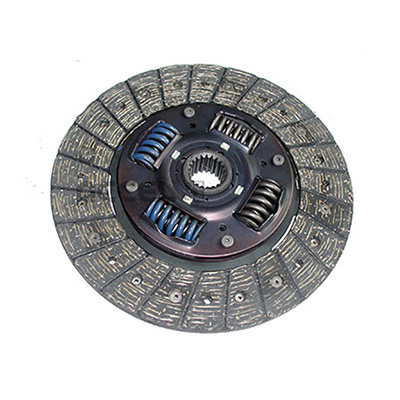- Arabic
- French
- Russian
- Spanish
- Portuguese
- Turkish
- Armenian
- English
- Albanian
- Amharic
- Azerbaijani
- Basque
- Belarusian
- Bengali
- Bosnian
- Bulgarian
- Catalan
- Cebuano
- Corsican
- Croatian
- Czech
- Danish
- Dutch
- Afrikaans
- Esperanto
- Estonian
- Finnish
- Frisian
- Galician
- Georgian
- German
- Greek
- Gujarati
- Haitian Creole
- hausa
- hawaiian
- Hebrew
- Hindi
- Miao
- Hungarian
- Icelandic
- igbo
- Indonesian
- irish
- Italian
- Japanese
- Javanese
- Kannada
- kazakh
- Khmer
- Rwandese
- Korean
- Kurdish
- Kyrgyz
- Lao
- Latin
- Latvian
- Lithuanian
- Luxembourgish
- Macedonian
- Malgashi
- Malay
- Malayalam
- Maltese
- Maori
- Marathi
- Mongolian
- Myanmar
- Nepali
- Norwegian
- Norwegian
- Occitan
- Pashto
- Persian
- Polish
- Punjabi
- Romanian
- Samoan
- Scottish Gaelic
- Serbian
- Sesotho
- Shona
- Sindhi
- Sinhala
- Slovak
- Slovenian
- Somali
- Sundanese
- Swahili
- Swedish
- Tagalog
- Tajik
- Tamil
- Tatar
- Telugu
- Thai
- Turkmen
- Ukrainian
- Urdu
- Uighur
- Uzbek
- Vietnamese
- Welsh
- Bantu
- Yiddish
- Yoruba
- Zulu
Oct . 21, 2024 14:36 Back to list
Understanding the Functionality and Applications of Machine Belts in Industry
The Essential Role of Machine Belts in Modern Industry
In today's fast-paced manufacturing environment, efficiency and reliability are paramount. One of the unsung heroes that contributes to these factors is the machine belt. Often overlooked in the grand machinery that powers factories and assembly lines, machine belts play a critical role in the transfer of power and motion between various components of machines.
Machine belts are flexible loops made of various materials, including rubber, fabric, leather, and synthetic polymers, designed for use in a myriad of industrial machines. Their primary function is to transmit power from one part of a machine to another, allowing different components to work in harmony. From simple tasks like moving a conveyor belt to more complex operations in motors and gear systems, the role of machine belts cannot be underestimated.
One of the most common types of machine belts is the V-belt, which has a trapezoidal cross-section that fits snugly into matching grooves of pulleys
. The design of the V-belt allows it to effectively grip the pulleys, reducing slippage and improving the efficiency of power transmission. This is essential in applications where precision and reliability are key, such as in automotive engines and industrial machinery.Another significant type is the flat belt, traditionally made from leather or rubber, which is used to connect vertical or horizontal shafts. The flat belt's versatile design makes it suitable for various applications, including textile mills and woodworking machinery. Despite the emergence of new materials and designs, flat belts have retained their place in many industries due to their simplicity and effectiveness.
machine belt

The advancement of technology has also paved the way for new types of machine belts, such as synchronous belts (or timing belts), which are designed to provide precise positioning in applications like robotics and CNC machines. These belts have teeth that mesh with the grooves of pulleys, ensuring that there is no slippage, which is critical when synchronous speed and accurate positioning are required.
In addition to transferring power, machine belts also serve important roles in noise reduction and vibration dampening. By absorbing some of the shocks and vibrations that occur during machinery operation, belts can enhance the overall longevity of both the belt and the machinery, leading to lower maintenance costs and improved reliability.
However, like any mechanical component, machine belts are subject to wear and tear. Factors such as heat, humidity, and operational stress can degrade their performance over time. Regular inspection and maintenance are crucial to ensure that belts remain in good condition. Signs of wear may include cracking, fraying, or a noticeable decrease in performance. Companies that prioritize belt maintenance often find that they can avoid unexpected downtimes, which can be costly in terms of both time and resources.
In conclusion, machine belts are vital components in various industrial applications, contributing significantly to efficiency, reliability, and performance. Their variety—ranging from V-belts to synchronous belts—ensures that they can meet the diverse needs of different machinery. As industries continue to evolve and embrace new technologies, machine belts will remain a fundamental part of the infrastructure that keeps our manufacturing processes running smoothly. Investing in high-quality belts and maintaining them properly is a small price to pay for the significant returns in operational efficiency and productivity.
-
Korean Auto Parts Timing Belt 24312-37500 For Hyundai/Kia
NewsMar.07,2025
-
7PK2300 90916-T2024 RIBBED BELT POLY V BELT PK BELT
NewsMar.07,2025
-
Chinese Auto Belt Factory 310-2M-22 For BMW/Mercedes-Benz
NewsMar.07,2025
-
Chinese Auto Belt Factory 310-2M-22 For BMW/Mercedes-Benz
NewsMar.07,2025
-
90916-02660 PK Belt 6PK1680 For Toyota
NewsMar.07,2025
-
drive belt serpentine belt
NewsMar.07,2025

